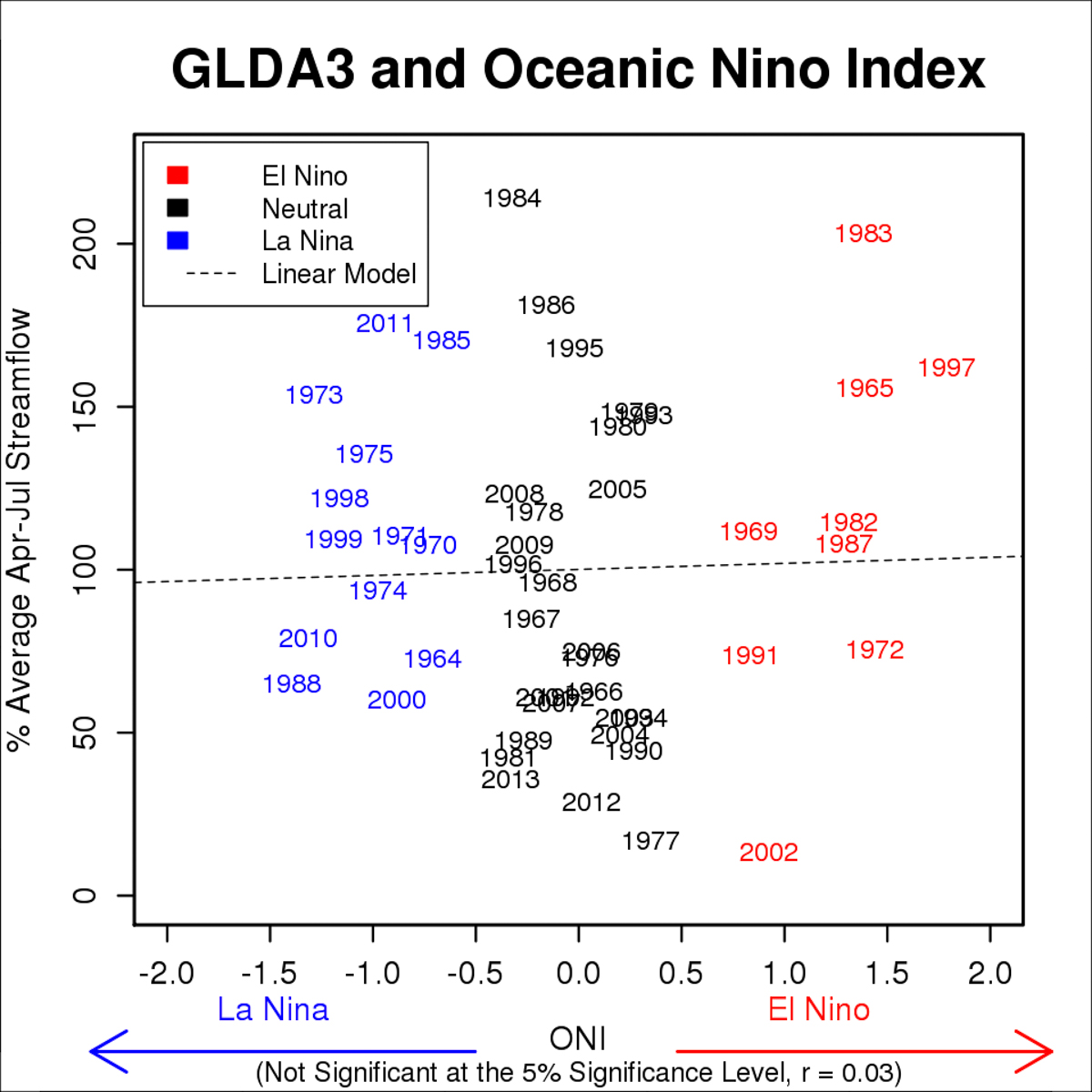One of the epic Colorado River stories involves the Great El Niño of 1983, the year they almost lost Glen Canyon Dam. With a massive snowpack melting off in a hurry in June of that year, Lake Powell filled to the spillways, which couldn’t handle the load, and it is said we came close to catastrophe. (See John Weisheit, pdf)
As we head into what may be another big El Niño year, can we expect another big snowpack and a Powell-filling runoff? No.
Paul Miller at the Colorado Basin River Forecast Center ran the numbers and sent along this graph of El Niño vs. La Niña and its impact on Colorado River flow:
“GLDA3” is CBRFC-speak for the natural inflow into Lake Powell – what you’d get if there were no dams. You can see 1983 hanging out there in the upper right – big El Niño, big runoff. But of the nine El Niño years in his data set, three were wet, three were middling, and three were dry. 2002, an epic dry year, was also an El Niño year. Here’s how Paul explains it:
There’s not a huge correlation between ENSO and the Upper Colorado River Basin, where we get most of our water supply….
But there is a bit of correlation in the Lower Colorado River Basin, which, hopefully, will provide a little extra water to the system. Maybe some of that water can be used to meet Mexico water deliveries or southern California agricultural demands, which could potentially reduce releases from Hoover Dam and Lake Mead.


Pingback: Blog round-up: Essential elements for a water bond, groundwater policy, water conservation, and more … plus fire, water and basketweaving … » MAVEN'S NOTEBOOK | MAVEN'S NOTEBOOK
Pingback: In search of summer rains | jfleck at inkstain